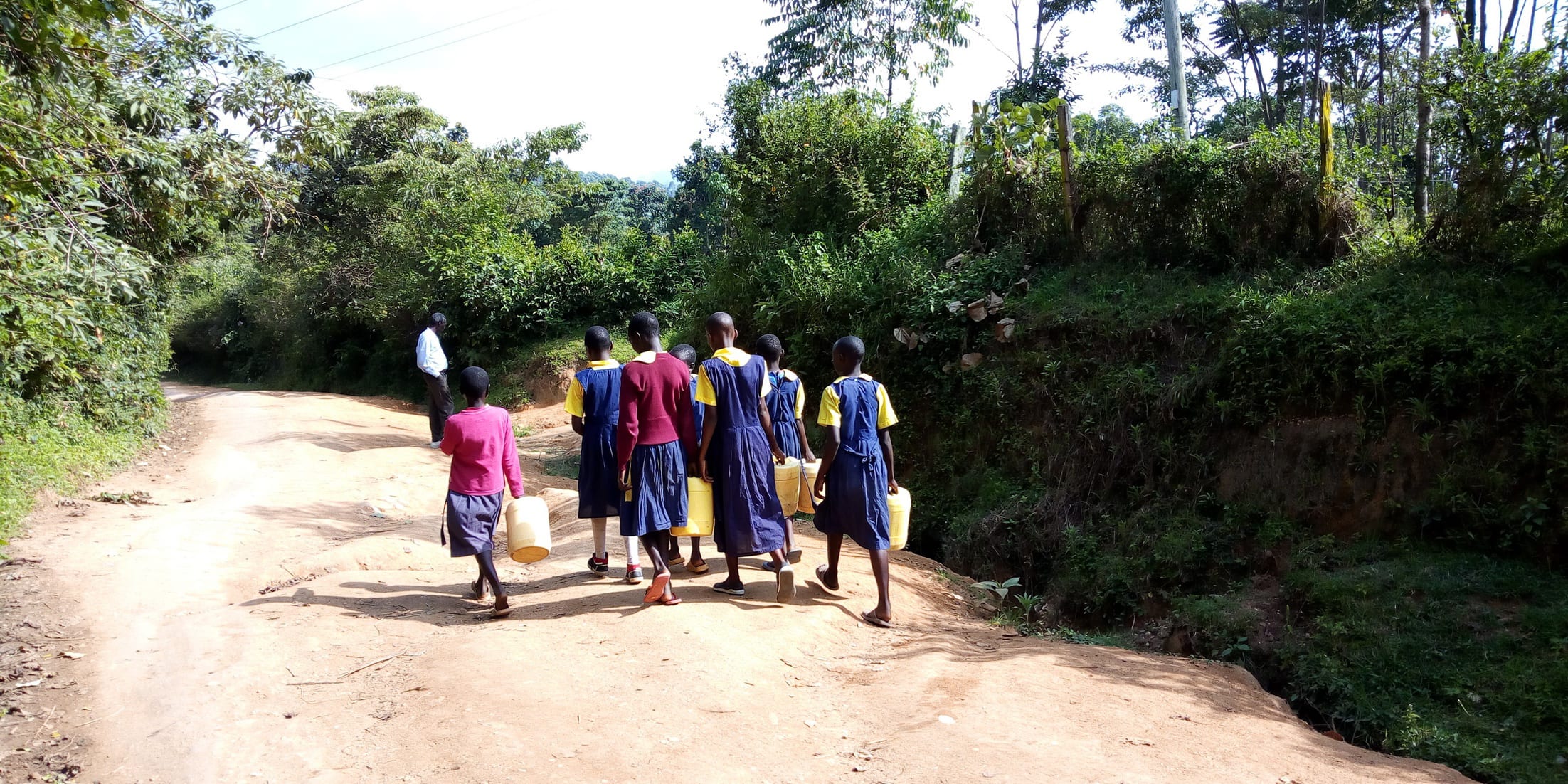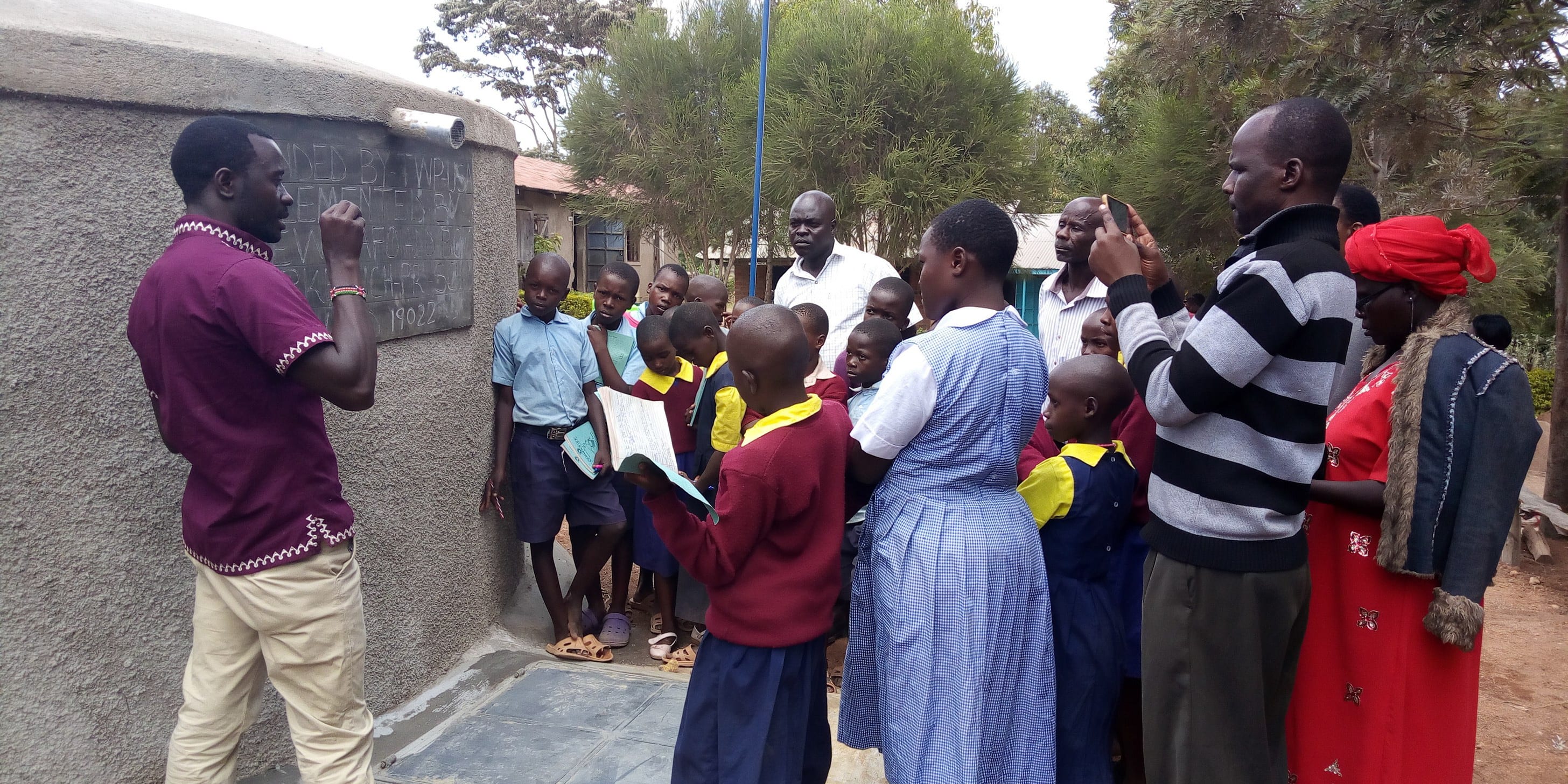Kapkemich Primary School was just served a closure notice for not having water or enough latrines on school grounds. If something isn't done in the next few months, the gate will close to the 838 students attending here.
Students have to leave school in search of water throughout the day. The surrounding community is so rural and peaceful that the only noise heard throughout the day comes from students as they fetch water.

They frequent a spring several hundred meters into the community. The spring is overgrown, and one of the teachers says that the concrete and discharge pipes were built up even before mobile phones came to Kenya. There is a steep slope that leads from the school to the spring, which gets very slippery when it rains. It's also hard to get back up with heavy containers of water.
That spring is shared with community members, so students sometimes have to wait in line before they're allowed their turn. Teachers have to accompany students to the spring to help explain their need to the community members. The water discharge speed is low, so students have to wait for a long time before their containers fill with water. This spring dries in the months of January, February, and March. This is when students face a lot of trouble as they have to look for water from other springs that are very far from school. Students waste so much valuable class time out finding enough water.
"The water we have here is little, and also very dirty. That is why we have continued to suffer from diarrhea and stomachaches," said Teacher Biwot.
"We need to do something before the situation becomes worse."
What we can do:
"There is an urgent need to improve in the area of sanitation and hygiene," said Librarian Ruto.
"We don't even have a compost pit. Our rubbish is just disposed in a secluded, open place. If we do nothing our children may suffer or even die as a result of poor sanitation and hygiene."
Training
Training on good hygiene habits will be held for two days. The facilitator will use PHAST (participatory hygiene and sanitation transformation), ABCD (asset-based community development), CTC (child to child), lectures, group discussions, and handouts to teach health topics and ways to promote good practices within the school. The CTC method will prepare students to lead other students into healthy habits, as well as kickstart a CTC club for the school.
Handwashing Stations
The school only has one handwashing facility improvised from a 20-liter jerrycan too small to serve the entire school. In addition to that, it is placed out in the field not close to any latrines since it is expected to serve all students, both boys and girls. Unfortunately, not every student takes the time to walk there or to get water to fill the facility when it's empty. This explains why most students just run back to class straight after using latrines without washing hands.
Two handwashing stations will be delivered to the school, and the club will fill them with water on a daily basis and make sure there is always a cleaning agent such as soap or ash.
VIP Latrines
There are only eight latrines per gender, meaning the ratio is really one latrine per 100 students. There are so many students using very few latrines, which makes them dirty within a very short time.
Two triple-door latrines will be constructed with local materials that the school will help gather. Three doors will serve the girls while the other three serve the boys. And with a new source of water on school grounds, students and staff should have enough to keep these new latrines clean.
Rainwater Catchment Tank
A 50,000-liter rainwater catchment tank will help alleviate the water crisis at this school. The school will also help gather the needed materials such as sand, rocks, and water for mixing cement. Once finished, this tank can begin catching rainfall that will be used by the school’s students and staff.
We and the school strongly believe that with this assistance, standards will significantly improve. These higher standards will translate to better academic performance!

 Rainwater Catchment
Rainwater Catchment
 Rehabilitation Project
Rehabilitation Project



































